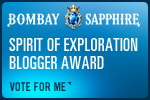I didn't want to place an overseas order or deal with the Euro exchange rate, so I started looking to see what was available closer to home. I went to the Mscan website (mscan.com) and downloaded a trial version of the Meteo Pro software to my laptop. There's not much to look at without a radio signal, though, so I shopped for the shortwave/SSB radio mentioned in the British website, the Grundig G3 Globe Traveler. I found it for sale on the Landfall Navigation website (landfallnavigation.com), where I had recently purchased a courtesy flag, but a nice person there informed me that the radio had been discontinued. Thinking there must be a few still unsold somewhere, I found one at Amazon.com for $99.99, well below the $150.00 retail price. When it arrived, I put the whole package together, using an audio cable I already had, and started experimenting.
I tuned to the American frequencies I found in Meteo's help screen and discovered that the weather maps they offer focus on different coastal areas depending on the signal's origin: Boston for the North Atlantic; New Orleans for the Caribbean; and Point Reyes for the Pacific. I focused on the New Orleans signals because the Caribbean is my area of sailing interest. With a little fine tuning of both the radio and the software, I was able to get a weather fax to draw on the screen, but then a banner appeared informing me that I was using an unregistered version of the software. It made the weather fax almost unreadable. I checked to see what it would cost to register the software: $239.00! Back to the Internet, where I found a shareware program called SeaTTY that serves the same basic function for a $35.00 registration fee and does not block its weather faxes with banners to encourage registration.
Tuning in the New Orleans frequencies from western Colorado has not been easy. The signals are not very clean, so the weather faxes are also not very clean. I imagine that if I was closer to the point of origin, I would get a much better result, something closer in quality to the weather fax at the top of this post, which was taken from NOAA's radiofax page (weather.noaa.gov/fax/gulf.shtml). When I head out to Savannah for another round of boat projects at the end of this week, I will take the whole weather fax kit with me to see how it does in a place where it could be really useful. More on that later...

 Raising Charlie: The Lessons of a Perfect Dog
Raising Charlie: The Lessons of a Perfect Dog






No comments:
Post a Comment